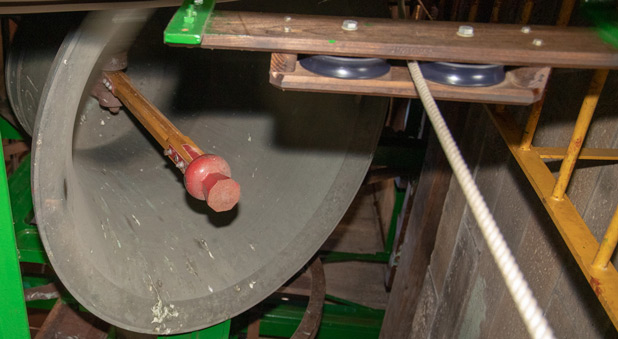“To die for one’s country is an act of love for your fellow beings and we honour them today.” said Archbishop Davies, as bells rang out marking 100 years since the end of the Great War.
The Governor, Premier and Lord Mayor gathered in St Andrew’s Cathedral, prior to the official service at the Cenotaph, to give thanks in the same way, even using some of the same words as the Cathedral service in 1918.
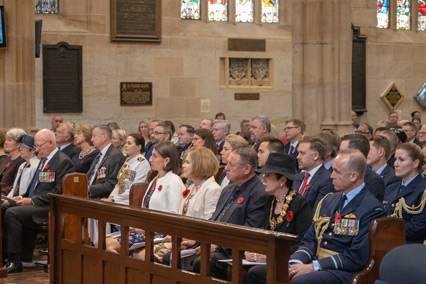
“About 8 million civilians were also killed, let alone another 23 million wounded soldiers, sailors and airmen. It was a war of tragic loss on a scale the world had not seen before. Our own country’s casualties included the death of 60,000 Australians as well as 150,000 citizens wounded, representing more than 6% of the Australian population.” Archbishop Davies told the congregation. “While death may come to us all, the death of the young, cut short in the flower of their lives has a poignancy of its own. Some of the gravestones of World War I tell the story of the cost of peace.”
A mother’s part is a broken heart and a burden of lonely years - Pte William Doughan, 23 yrs, 26 Sept 1917 (Granville)
A painful shock, a blow severe, to part with one we love so dear – Pte Thomas Matthews, 27 yrs, KIA 5 Nov 1916 (Adelaide)The dearest spot of earth to me is where my son lies – Corp Stanley Fear, 20 yrs, KIA 23 July 1916 (Melbourne)
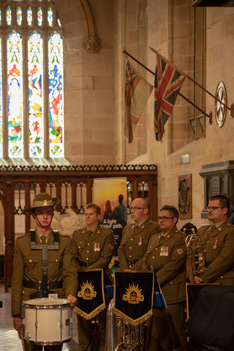
The words of Jesus read by our Premier (who read the New Testament reading) state it so eloquently: ‘Greater love has no one than this - to lay down one’s life for one’s friends.’ Jesus’ death brings hope, his cross signals the end of death. And this was known by many soldiers in World War I, where their headstones reveal a hope that is secure beyond the grave.
I know that my redeemer liveth – Pte William Robert Comb, 24 yrs, killed in action 31 July 1916 (Victoria)
The cross our only hope - Pte Reuben Meek, 25 yrs, KIA 26 July 1916 (Victoria)
Nothing in my hand I bring, simply to thy cross I cling - Pte Robert Joseph Totten, 20 yrs, died of wounds 11 Apr 1917 (Qld)
I look for the resurrection of the dead and the life of the world to come – Pte Donald Laird, 28 yrs, DOW 30 Jan 1917 (Qld)
The Lord is my shepherd I shall not want – Pte Robert Francis Wilkinson, 24 yrs, KIA 9 May 1918 (Auburn)
In sure and certain hope of a joyful resurrection – Pte Cyril Schwab, 19 yrs, DOW 9 Aug 1916 (Melbourne)
“One hundred years ago, the bells rang out from churches across Sydney to celebrate Armistice Day. The bells of St Andrew’s Cathedral will be rung this morning at one minute to 11 for the same purpose, and as the Town Hall strikes 11 o’clock, I trust those in George Street will take the opportunity to stop their hurried lives, pause, pray, and give thanks to God for the peace that we enjoy in this land.” the Archbishop said.
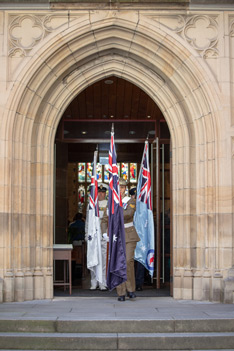
The tenor bell rang solemnly for one minute at St Andrew’s Cathedral as bells from Anglican and other churches across Greater Sydney and the Illawarra also rang out. At St Michael’s Cathedral in Wollongong congregation members wrapped 55 poppies around a large pine tree in memory of the 55 men on its Honour Board.
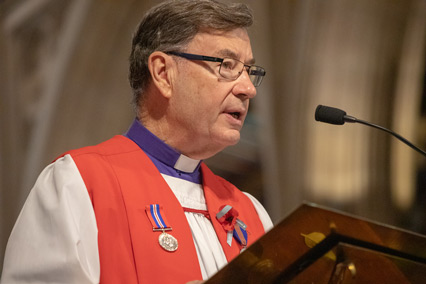
“Yet the peace that passes all understanding is also to be grasped, at God’s gracious invitation, which too was won at great cost, the costliest death of all, accomplishing the death of death itself.” Archbishop said at the conclusion of his sermon in Sydney. “It is not without reason that Jesus is described as the Prince of peace, for he alone brings that lasting peace, that surpasses the temporality of this world, that bring us the hope of sins forgiven and an inheritance of everlasting life.
Main photo: The Tenor Bell of the Cathedral tolls just before 11am on the November 11, 2018

